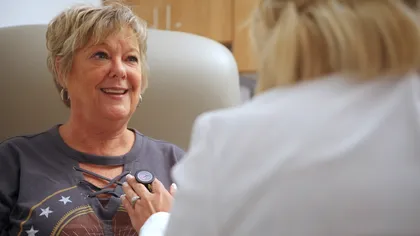Heart Murmurs
What causes a heart murmur?
A heart murmur is caused by the turbulent movement of blood moving through the heart valves and chambers. Normally, the blood flows from one chamber to the next and valves close tightly to prevent blood from flowing backwards. In some cases, the valves can become narrowed or stiffened, or leak (regurgitate) and this causes the blood to flow abnormally creating the sound that is heard with a stethoscope when your healthcare provider does a physical exam.
Heart murmurs may be caused by a number of factors or diseases, including:
- Defective heart valves
- Holes in the walls of your heart (atrial septal defect or ventricular septal defect)
- Pregnancy (increased blood volume)
- Fever
- Anemia (a decrease in the red cells in the blood)
- Thickening of pumping chamber of the heart (ventricular hypertrophy)
- During times of rapid growth in children (innocent murmur)
What are the different types of murmurs?
All murmurs are analyzed for location, pitch, frequency, and duration. They are also graded according to how loud they are (on a scale of 1 to 6 with 1 being very faint and 6 being very loud).
Types of murmurs include:
- Systolic murmur. This happens during a heart muscle contraction. Systolic murmurs are divided into ejection murmurs (due to blood flow through a narrowed vessel or irregular valve) and regurgitant murmurs (backward blood flow into one of the chambers of the heart).
- Diastolic murmur. This happens during heart muscle relaxation between beats. Diastolic murmurs are due to a narrowing (stenosis) of the mitral or tricuspid valves, or regurgitation of the aortic or pulmonary valves.
- Continuous murmur. This happens throughout the cardiac cycle.
Some murmurs can be heard best when listening on the front of the chest, while others can be heard best when listening with a stethoscope on your back. Your healthcare provider may ask you to hold your breath so that the sound of your heart beating can be heard without the sounds of your breathing interfering with the assessment. You may also be asked to lay on your side or to stand and squat to see how the chambers of the heart and valves react to the increased blood flow through the heart chambers and the heart valves.









